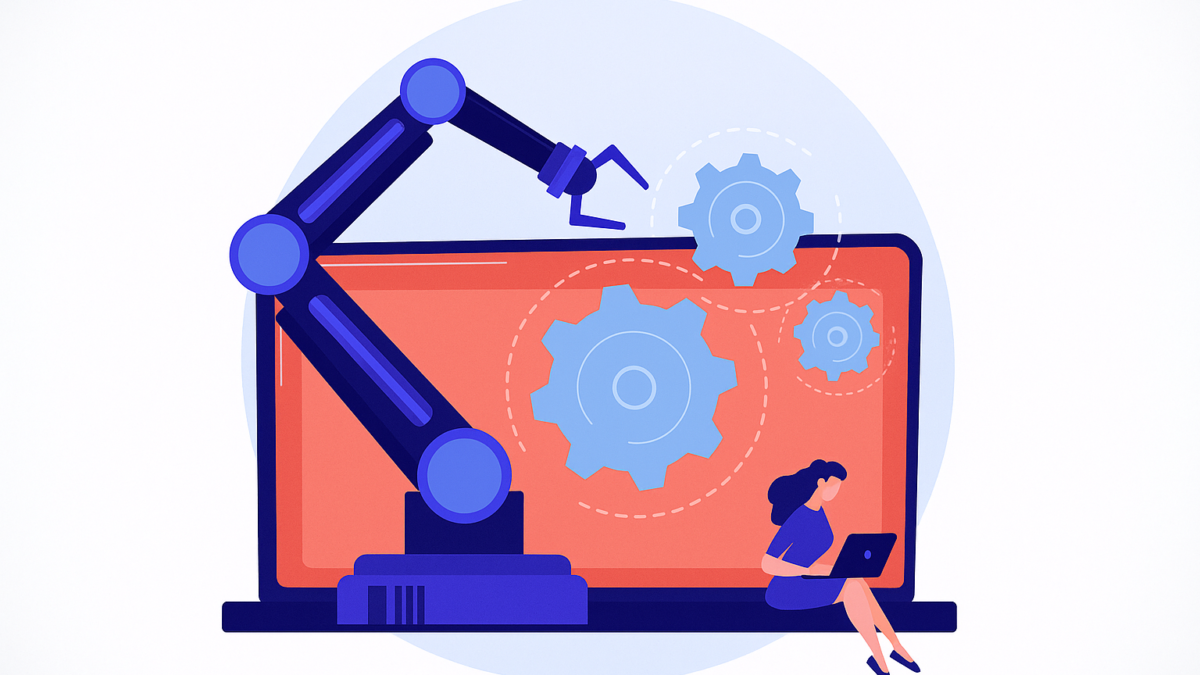Automation 2.0: How AI Is Redefining Workplace Productivity in 2025
Table of Contents
Remember when automation meant replacing manual tasks?
In 2025, Automation 2.0 is doing much more it’s augmenting human intelligence, not eliminating it.
AI is reshaping how we work, collaborate, and innovate — empowering people to focus on creativity, problem-solving, and strategy while machines handle the repetitive grind.
Welcome to the era where automation doesn’t just do the work it thinks with you.
The Shift from Efficiency to Intelligence
Traditional automation was about speed.
AI-driven automation, on the other hand, is about smart adaptability understanding context, predicting needs, and continuously improving processes.
Here’s how the evolution looks:
| Automation 1.0 | Automation 2.0 |
|---|---|
| Rule-based tasks | Context-aware learning |
| Fixed workflows | Dynamic, adaptive processes |
| Manual oversight | AI-driven optimization |
| Task completion | Insight generation |
This shift marks the dawn of intelligent productivity powered by machine learning, NLP, and data analytics.
Key Areas Where AI Is Transforming Workplaces
Smart Workflow Management
AI tools like Notion AI, ClickUp Brain, and Microsoft Copilot automate scheduling, task tracking, and even idea generation — cutting manual workload by up to 40%.
Intelligent Decision-Making
Predictive analytics helps leaders make real-time, data-backed decisions — from sales forecasting to supply chain optimization.
Personalized Employee Experiences
AI-driven HR tech customizes learning paths, career growth, and feedback loops — making workplaces more human-centric and engaging.
Automation in Communication
Tools like Grammarly, ChatGPT, and JasperAI streamline communication ensuring consistency and clarity across teams, globally.
The Human-AI Collaboration Mindset
Contrary to the fear of “AI replacing humans,” Automation 2.0 proves that humans and AI can co-create.
While AI handles repetitive tasks, humans bring emotional intelligence, creativity, and ethics to the table.
The future of work lies in this symbiotic relationship, where human intuition meets machine precision.
Challenges Ahead
Like any major shift, AI-driven automation brings challenges:
- Ethical use of automation in HR and surveillance.
- Data privacy and cybersecurity risks.
- Workforce reskilling and adaptability.
Organizations that prioritize transparency and continuous learning will thrive in this hybrid era.
The Road Ahead
Automation 2.0 is not about doing more with less it’s about doing better with smarter tools.
Businesses embracing AI for human-centered productivity are already outperforming their competitors.
The message is clear: In 2025, the most valuable skill isn’t speed it’s synergy between humans and machines.
You May Also Like: Gamification in EdTech: Making Learning Addictive in 2025





